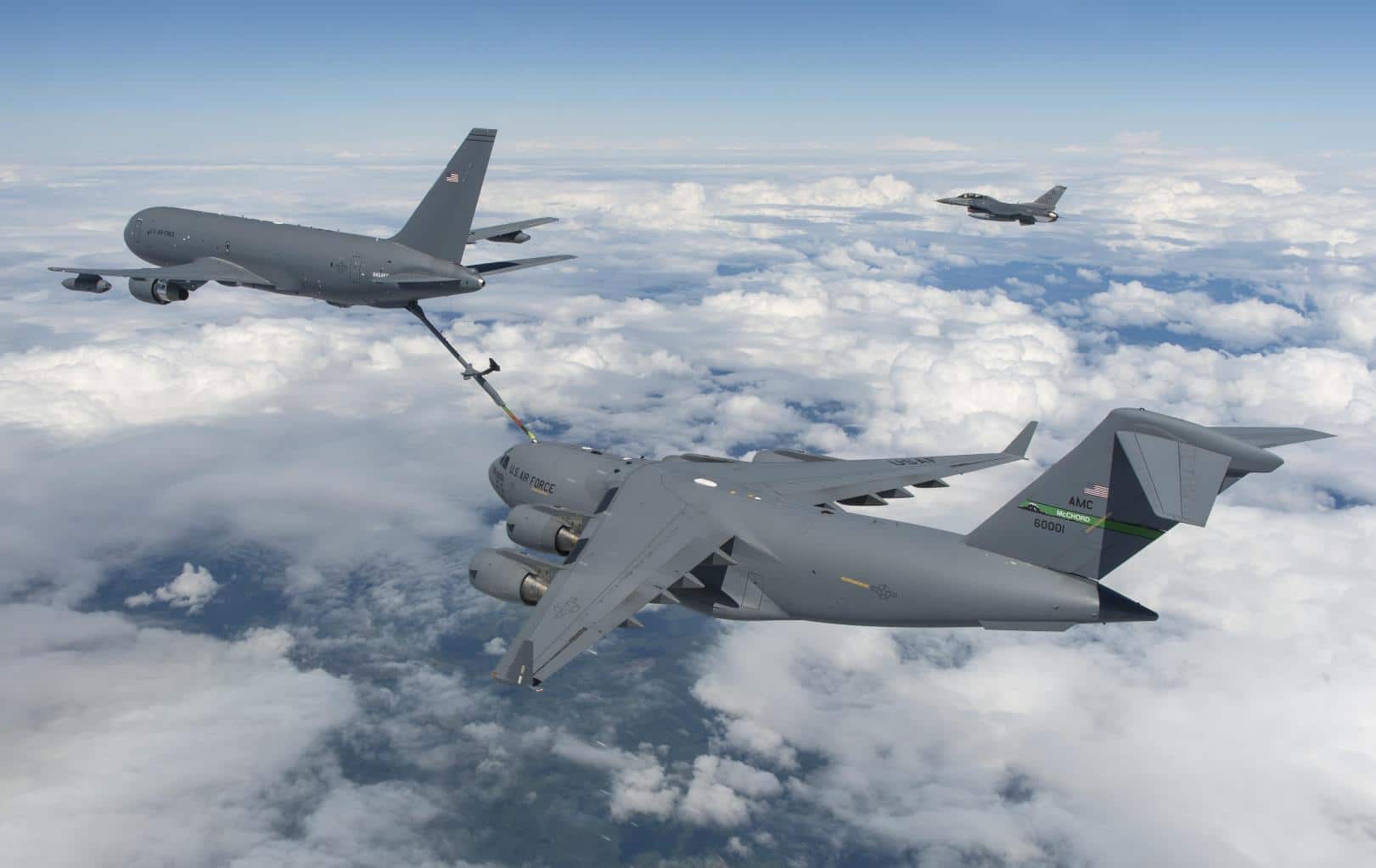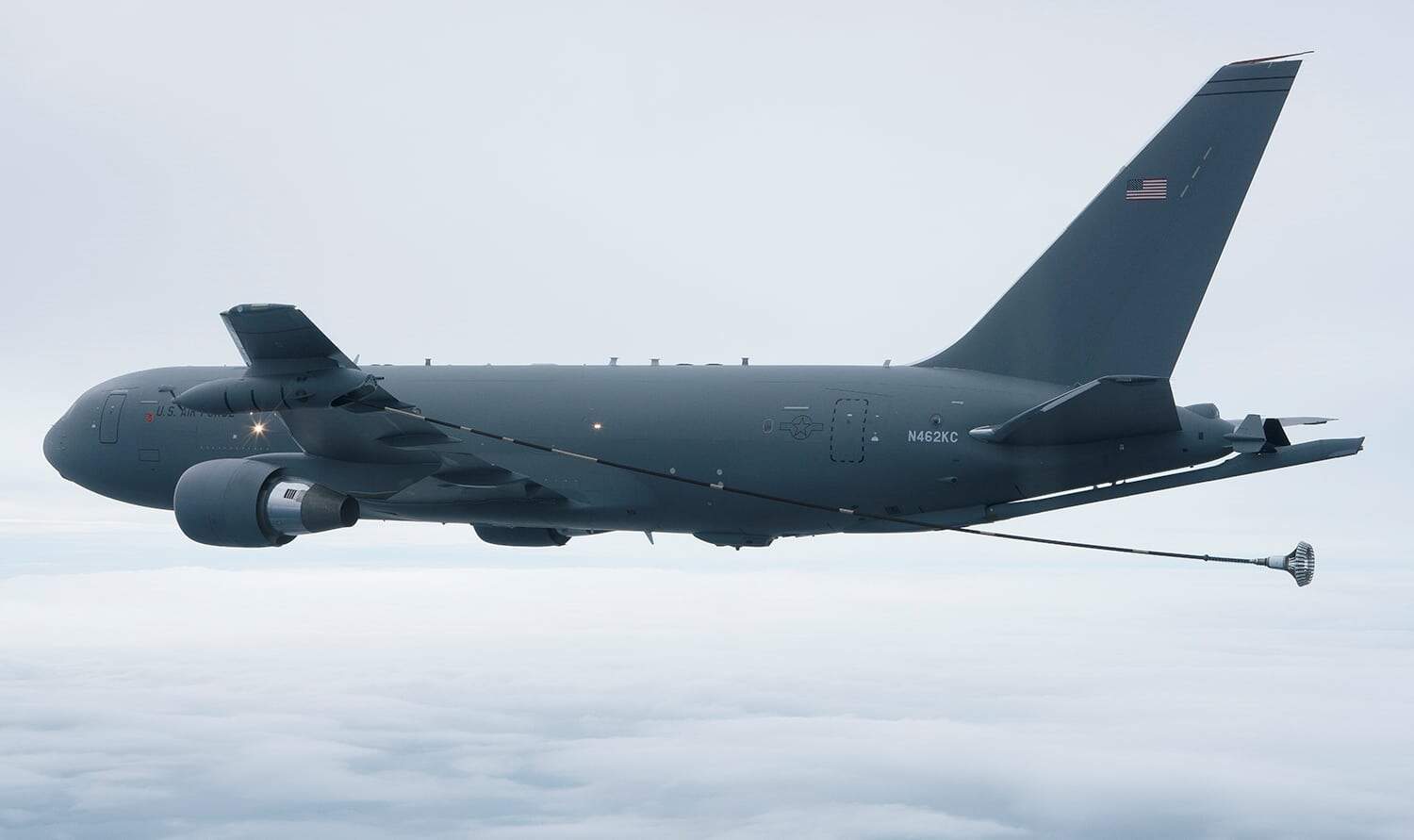At 1032 local time on Tuesday December 5th 2017, the first production-spec Boeing KC-46A Pegasus aerial refueling tanker took off from Paine Field at Boeing’s plant at Everett in Washington.
The flight lasted some three hours and thirty minutes, during which the two Boeing test pilots and crew climbed to 39,000 feet and executed the FAA-approved operational tests on the engines, flight controls, and environmental systems. After the flight the jet underwent post-flight instrumentation checks and inspections.

All is not well with the KC-46 program though. Boeing had been committed to delivery of the first production variant of the new tanker to the United States Air Force (USAF) before the end of the 2017 calendar year.
The expected delivery date has slipped to an as yet undetermined date in 2018. Six prototype KC-46As have been built and flown since September of 2015, accumulating more than 2,200 flight hours and 1,600 refueling transfers.

The KC-46A prototypes have already passed gas to General Dynamics F-16 Fighting Falcons, Boeing F/A-18 Hornets, Boeing AV-8B Harriers, Boeing C-17 Globemaster IIIs, Fairchild Republic A-10 Warthogs, and have passed gas to and received gas from Boeing KC-135R Stratotankers, Boeing KC-10 Extenders, and other KC-46 Pegasus prototypes.
Testing with other current military aircraft such as Lockheed Martin F-22 Raptors, F-35 Lightning IIs, and Northrop Grumman B-2 Spirits has not yet been completed.

The development of the KC-46A has been a political and fiscal soap opera right from the beginning. Without slogging into the painful details, suffice it to say that in this day and age it’s highly unusual for a program to be as far off both schedule and expectations as the KC-46A program has been.
But the jet can carry ten percent more fuel than the KC-135 and about 33 tons of cargo in a larger “wide body” fuselage. The new tanker also sports an advanced electronic flight instrumentation system (EFIS)-equipped flight deck by Rockwell-Collins.

The Pegasus is equipped with dual wing-mounted drogue reel pods and a single rigid boom refueling system. This allows multiple simultaneous “plugs” of aircraft using the probe and drogue refueling method (primarily US Navy and Marines aircraft along with many foreign allied types) or refueling receptacles primarily used by the USAF.
KC-46As are also equipped with infrared countermeasures along with defensive electronic warfare equipment. The jet can even be configured to carry 114 passengers or litter patients when pressed into service as a medical evacuation aircraft.

There are two issues in particular that need to be sorted out. The rigid boom refueling arm has experienced several un-commanded extensions when aircraft receiving fuel have detached from it, which could cause damage to the receiving aircraft’s skin surface- not good for any aircraft but especially for stealthy types.
The KC-46’s high frequency (HF) radio utilizes the aircraft’s skin as an antenna, which can cause electrical arcing and sparking- not good for a tanker carrying tons of fuel at high altitude. Initial production aircraft may lack the wing-mounted drogue reel pods too.

The total USAF buy of KC-46As is expected to be 179 airframes. Several foreign customers have expressed interest in the KC-46. Italy, Japan, and Colombia already operate tanker versions of the commercial 767-2XX airframe, with Japan and Brazil on the order books.
The USAF KC-46As will replace the veteran Boeing KC-135E Stratotankers. The USAF has said that the KC-46A fleet will train at Altus Air Force Base (AFB) in Oklahoma. The first operational KC-46A units will be based at McConnell AFB in Kansas and Seymour-Johnson AFB in North Carolina along with Pease Air National Guard Base (ANGB) in New Hampshire. Eventually some ten to twelve bases will host KC-46A units.

